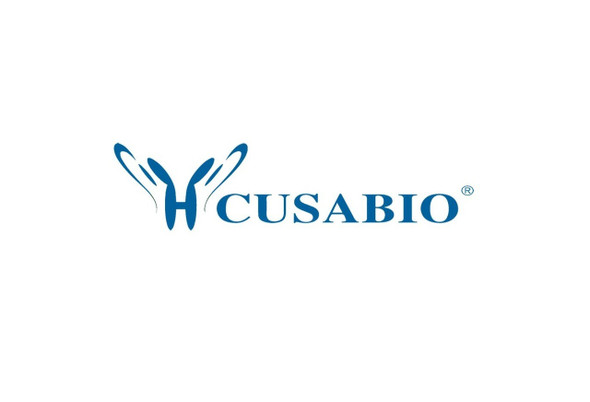Cusabio Human Recombinants
Recombinant Human AT-rich interactive domain-containing protein 1A (ARID1A), partial | CSB-BP002058HU1
- SKU:
- CSB-BP002058HU1
- Availability:
- 3 - 7 Working Days
Description
Recombinant Human AT-rich interactive domain-containing protein 1A (ARID1A), partial | CSB-BP002058HU1 | Cusabio
Alternative Name(s): B120 BRG1-associated factor 250 Short name: BAF250 BRG1-associated factor 250a Short name: BAF250A Osa homolog 1 Short name: hOSA1 SWI-like protein SWI/SNF complex protein p270 SWI/SNF-related, matrix-associated, actin-dependent regulator of chromatin subfamily F member 1 hELD C1orf4, OSA1, SMARCF1
Gene Names: ARID1A
Research Areas: Cancer
Organism: Homo sapiens (Human)
AA Sequence: SLAKRCVCVSNTIRSLSFVPGNDFEMSKHPGLLLILGKLILLHHKHPERKQAPLTYEKEEEQDQGVSCNKVEWWWDCLEMLRENTLVTLANISGQLDLSPYPESICLPVLDGLLHWAVCPSAEAQDPFSTLGPNAVLSPQRLVLETLSKLSIQDNNVDLILATPPFSRLEKLYSTMVRFLSDRKNPVCREMAVVLLANLAQGDSLAARAIAVQKGSIGNLLGFLEDSLAATQFQQSQASLLHMQNPPFEPTSVDMM
Source: Baculovirus
Tag Info: N-terminal 10xHis-tagged and C-terminal Myc-tagged
Expression Region: 1976-2231aa
Sequence Info: Partial
MW: 32.4 kDa
Purity: Greater than 85% as determined by SDS-PAGE.
Relevance: Involved in transcriptional activation and repression of select genes by chromatin remodeling (alteration of DNA-nucleosome topology). Binds DNA non-specifically. Belongs to the neural progenitors-specific chromatin remodeling complex (npBAF complex) and the neuron-specific chromatin remodeling complex (nBAF complex). During neural development a switch from a stem/progenitor to a post-mitotic chromatin remodeling mechanism occurs as neurons exit the cell cycle and become committed to their adult state. The transition from proliferating neural stem/progenitor cells to post-mitotic neurons requires a switch in subunit composition of the npBAF and nBAF complexes. As neural progenitors exit mitosis and differentiate into neurons, npBAF complexes which contain ACTL6A/BAF53A and PHF10/BAF45A, are exchanged for homologous alternative ACTL6B/BAF53B and DPF1/BAF45B or DPF3/BAF45C subunits in neuron-specific complexes (nBAF). The npBAF complex is essential for the self-renewal/proliferative capacity of the multipotent neural stem cells. The nBAF complex along with CREST plays a role regulating the activity of genes essential for dendrite growth
Reference: "A specificity and targeting subunit of a human SWI/SNF family-related chromatin-remodeling complex." Nie Z., Xue Y., Yang D., Zhou S., Deroo B.J., Archer T.K., Wang W. Mol. Cell. Biol. 20:8879-8888(2000)
Storage: The shelf life is related to many factors, storage state, buffer ingredients, storage temperature and the stability of the protein itself. Generally, the shelf life of liquid form is 6 months at -20?/-80?. The shelf life of lyophilized form is 12 months at -20?/-80?.
Notes: Repeated freezing and thawing is not recommended. Store working aliquots at 4? for up to one week.
Function: Involved in transcriptional activation and repression of select genes by chromatin remodeling (alteration of DNA-nucleosome topology). Component of SWI/SNF chromatin remodeling complexes that carry out key enzymatic activities, changing chromatin structure by altering DNA-histone contacts within a nucleosome in an ATP-dependent manner. Binds DNA non-specifically. Belongs to the neural progenitors-specific chromatin remodeling complex (npBAF complex) and the neuron-specific chromatin remodeling complex (nBAF complex). During neural development a switch from a stem/progenitor to a postmitotic chromatin remodeling mechanism occurs as neurons exit the cell cycle and become committed to their adult state. The transition from proliferating neural stem/progenitor cells to postmitotic neurons requires a switch in subunit composition of the npBAF and nBAF complexes. As neural progenitors exit mitosis and differentiate into neurons, npBAF complexes which contain ACTL6A/BAF53A and PHF10/BAF45A, are exchanged for homologous alternative ACTL6B/BAF53B and DPF1/BAF45B or DPF3/BAF45C subunits in neuron-specific complexes (nBAF). The npBAF complex is essential for the self-renewal/proliferative capacity of the multipotent neural stem cells. The nBAF complex along with CREST plays a role regulating the activity of genes essential for dendrite growth (By similarity).
Involvement in disease: Coffin-Siris syndrome 2 (CSS2)
Subcellular Location: Nucleus
Protein Families:
Tissue Specificity: Highly expressed in spleen, thymus, prostate, testis, ovary, small intestine, colon, and PBL, and at a much lower level in heart, brain, placenta, lung, liver, skeletal muscle, kidney, and pancreas.
Paythway:
Form: Liquid or Lyophilized powder
Buffer: If the delivery form is liquid, the default storage buffer is Tris/PBS-based buffer, 5%-50% glycerol. If the delivery form is lyophilized powder, the buffer before lyophilization is Tris/PBS-based buffer, 6% Trehalose, pH 8.0.
Reconstitution: We recommend that this vial be briefly centrifuged prior to opening to bring the contents to the bottom. Please reconstitute protein in deionized sterile water to a concentration of 0.1-1.0 mg/mL.We recommend to add 5-50% of glycerol (final concentration) and aliquot for long-term storage at -20?/-80?. Our default final concentration of glycerol is 50%. Customers could use it as reference.
Uniprot ID: O14497
HGNC Database Link: HGNC
UniGene Database Link: UniGene
KEGG Database Link: KEGG
STRING Database Link: STRING
OMIM Database Link: OMIM










